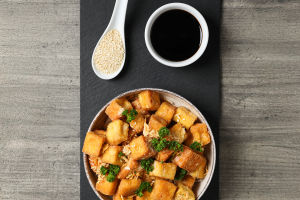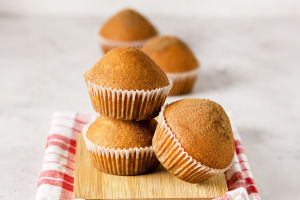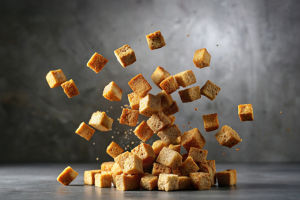There's a moment that happens when the first spoonful of dessert hits your tongue—it either surprises you or it doesn't. And for anyone who loves making sweets, that moment of surprise is where the magic lives.
If you've been rotating the same cookies, cakes, and parfaits, it might be time to think less about what dessert should look like and more about what dessert could be.
With just two key ingredients—chocolate and fruit—you can unlock a whole new level of creativity that blends flavor, color, texture, and even emotion. This isn't just about recipes; it's about how to build sensory experiences through dessert.
Why Chocolate and Fruit Are the Ultimate Pairing
Chocolate is rich, deep, and velvety. Fruit is bright, juicy, and fresh. On their own, they're great—but together, they create contrast that keeps each bite interesting. According to food scientist Harold McGee, our brains find combinations with contrast in texture and temperature (like warm chocolate and cold berries) far more stimulating than uniform textures.
When you balance sweetness with acidity—like pairing dark chocolate with raspberries or citrus—you're not just combining ingredients. You're layering flavor, structure, and visual drama.
1. Chocolate Shells with Fresh Berry Mousse
This is one of those desserts that looks like it came from a high-end bakery but is surprisingly easy to make at home.
• Melt high-quality dark chocolate (at least 70% cacao).
• Use silicone molds or the back of a spoon to create thin chocolate cups or domes. Let them set in the fridge.
• Whip up a mousse using pureed raspberries, coconut cream, and a natural sweetener. Pipe it into the shell just before serving.
Why this works: The break of the chocolate shell followed by the lightness of the mousse makes each bite feel engineered for delight. Plus, the deep red-and-dark-brown contrast is visually stunning.
2. Roasted Strawberries with Chocolate Soil
This dessert plays on temperature and texture more than sweetness. Roasting strawberries brings out their juices and a complex, jammy flavor, especially with a pinch of sea salt.
• Toss strawberries in a little olive oil and roast at 375°F until they begin to caramelize.
• Meanwhile, make chocolate "soil" by blitzing toasted oats, cocoa powder, and a dash of sea salt in a food processor.
• Plate the berries on a smear of Greek yogurt or coconut cream, then sprinkle the "soil" over top.
Why this works: There's a smoky warmth and slight savoriness that balances the fruit's sweetness, while the crunchy chocolate soil adds texture. It feels like a garden on a plate.
3. Grapefruit Segments Dipped in Dark Chocolate
This is a minimalist dessert that surprises people every time. Grapefruit's bitterness actually enhances the dark chocolate's complexity.
• Segment the grapefruit carefully, removing all membranes.
• Dip each piece halfway in melted chocolate and chill on parchment paper.
• Add a tiny sprinkle of chili flakes or smoked salt before the chocolate sets.
Why this works: It's unexpected—tart, bitter, sweet, and slightly spicy. Perfect as a conversation-starting dessert at dinner parties.
Designing for Visual Drama
Most home desserts are made in baking trays and bowls—but if you want to level up your creations, think about shape, layering, and plating:
• Use clear glasses for layered desserts like chocolate chia pudding with mango puree.
• Play with shape: Try making fruit spheres using melon ballers or chocolate "paint" using a pastry brush.
• Color contrast: Dark chocolate + kiwi, white chocolate + blueberries, ruby chocolate + orange.
Visual appeal isn't just about aesthetics—it also primes the brain for taste. According to a 2014 study published in Appetite, people rated the same dessert as more flavorful when it was plated attractively.
Let Texture Lead the Creativity
When in doubt, think texture before flavor. The most memorable desserts aren't necessarily the sweetest—they're the ones with crunch, melt, chew, snap, or creaminess. Chocolate and fruit give you all of these if you know how to build them:
• Crunch: cacao nibs, toasted coconut flakes, chopped roasted nuts
• Creaminess: banana puree, avocado chocolate mousse, whipped coconut
• Snap: tempered chocolate pieces, frozen berries
• Juiciness: orange segments, poached pears, roasted grapes
When you combine textures—like a crunchy base, soft fruit layer, and smooth chocolate drizzle—you create something people don't forget.
One Simple Rule: Think Like a Painter, Not a Baker
If you only take one idea from this article, let it be this: approach dessert like art, not engineering. Don't start with a rigid recipe. Start with a feeling. Do you want your dessert to feel light and joyful? Rich and grounding? Spontaneous and fun?
From there, choose your chocolate (dark, milk, or white), choose your fruit (tart, juicy, soft, tropical), and build with contrast in mind. You don't need to know pastry techniques—you just need to pay attention to what excites your senses.


